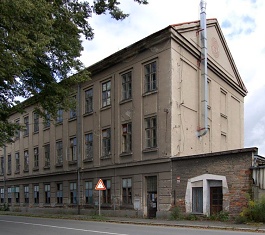
In the Czech Republic, there are over 11 thousand brownfields
 |
What is actually a brownfield?
The term brownfield refers to unused or insufficiently or inefficiently utilized areas. This can be a piece of land, a building, or an entire area that combines built and undeveloped space. Examples of brownfields include unused industrial and agricultural facilities, residential and administrative buildings, former military sites, abandoned shopping centers, or unused transport infrastructure. Their new use is often hindered by ecological burden, and in many cases, they cannot be handled in any way without undergoing a regeneration process.Eleven thousand brownfields occupy an area equivalent to the whole of Plzeň
It is difficult to determine the exact number of brownfields in the Czech Republic. One source for an overview of their number is the so-called National Brownfield Database, which is compiled and updated by the CzechInvest agency in cooperation with individual regional offices across the Czech Republic. Initial studies starting from 2005 have revealed over 11,000 areas in the Czech Republic that can be called brownfields based on the aforementioned definition. Their total area can be up to 38,000 hectares - three times larger than the total area of Plzeň.As part of the National Brownfield Regeneration Strategy, CzechInvest has identified 2,355 locations suitable for revitalization, covering a total area of over 10,000 hectares. For comparison, this is almost the same area as the city of Olomouc. The built-up area in these regions comprises over 420 hectares, roughly the size of the entire urban district of Prague 2. However, for a specific identified brownfield to be included in the national database, the land or building owner’s consent is also necessary, in addition to meeting a number of criteria. The latest version of the registry (available on the website brownfieldy.cz) currently (as of January 17, 2017) includes over 490 areas ready for potential investors.
Regions have their own databases, but they approach brownfields differently
 |
The Liberec region states that there are over 350 brownfields in its territory, while both the South Moravian and Ústí nad Labem regions "acknowledge" over 250 such locations. In contrast, the South Bohemia and Plzeň regions report only about twenty brownfields - those that are fully prepared for future investment. The Karlovy Vary region is unique in that it has no own registry and resorts to the National Database of CzechInvest when necessary. Access to the registry of unused areas also varies at the city level. The city of Brno, for example, keeps track of nearly 130 locations it calls brownfields, although its definition is quite broad. In contrast, Mariánské Lázně collaborates with the project Empty Houses, providing data on unused buildings within the city.
According to the database, more than 43% of brownfields are former industrial sites
According to the national database, the largest share of domestic brownfields consists of former industrial properties, followed by sites previously used for agriculture or civic amenities. The smallest representation in the database is of properties originally designated for tourism, raw material extraction, or transportation. As mentioned earlier, the list includes 490 brownfields, of which nearly three-quarters are entire complexes, i.e., areas with buildings, while there are just over 20 vacant plots. Less than half of the brownfields in this database cover an area of up to 1 hectare, while about one-tenth exceeds 10 hectares. The largest are usually former industrial complexes and especially military facilities, while the smallest are individual buildings previously used for residential or civic purposes.Utilizing brownfields is a long-term process, but it can be worthwhile
 |
So why is there revitalization of these areas and why do there exist people and companies willing to build on them again? Investments into new uses for brownfields also have their advantages. These are generally areas where buildings existed in the past (thus problems with unsuitable geological foundations for construction are eliminated) or lands where industrial activity has taken place (hence there is no risk that they contain sources of drinking water or are otherwise significant locations). Investment plans "on green fields" can often end poorly precisely because of these circumstances, as happened in Holešov in the Zlín region. Here, the largest industrial zone in the Czech Republic was supposed to be built, and the Zlín region invested over 1.6 billion crowns into an area of 360 hectares. However, beneath the land are sources of drinking water for Zlín, and the fields around the built infrastructure remain empty.
The English translation is powered by AI tool. Switch to Czech to view the original text source.
0 comments
add comment
Related articles
0
24.08.2017 | Pirates: Prague must address the development of brownfields and municipal housing
0
20.07.2017 | Towns can apply for money for the regeneration of unused sites
0
26.01.2017 | In the Czech Republic, there are over 11,000 brownfields covering an area of more than 38,000 hectares
0
25.01.2017 | The representatives of Ostrava approved the conditions for the competition to repair the slaughterhouse










